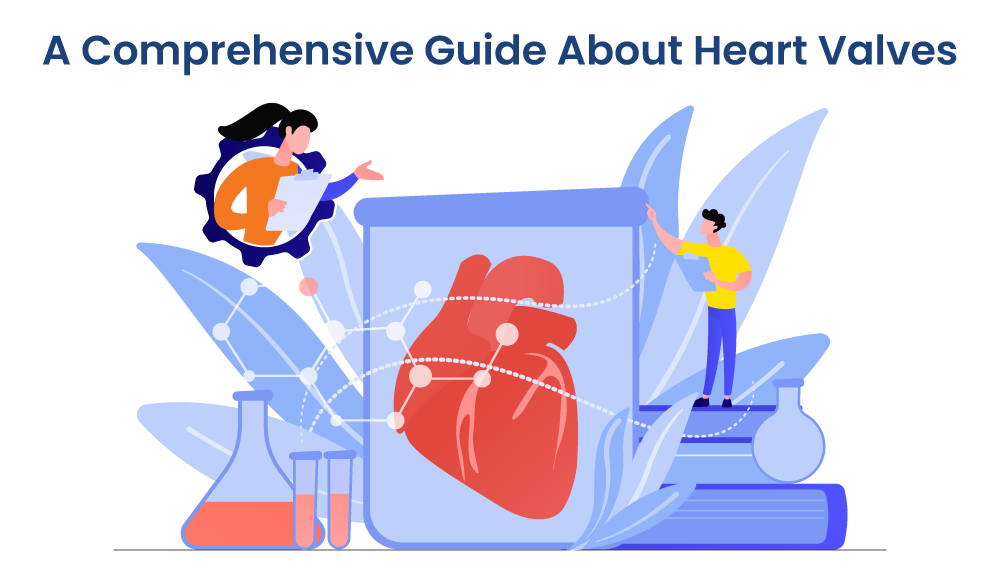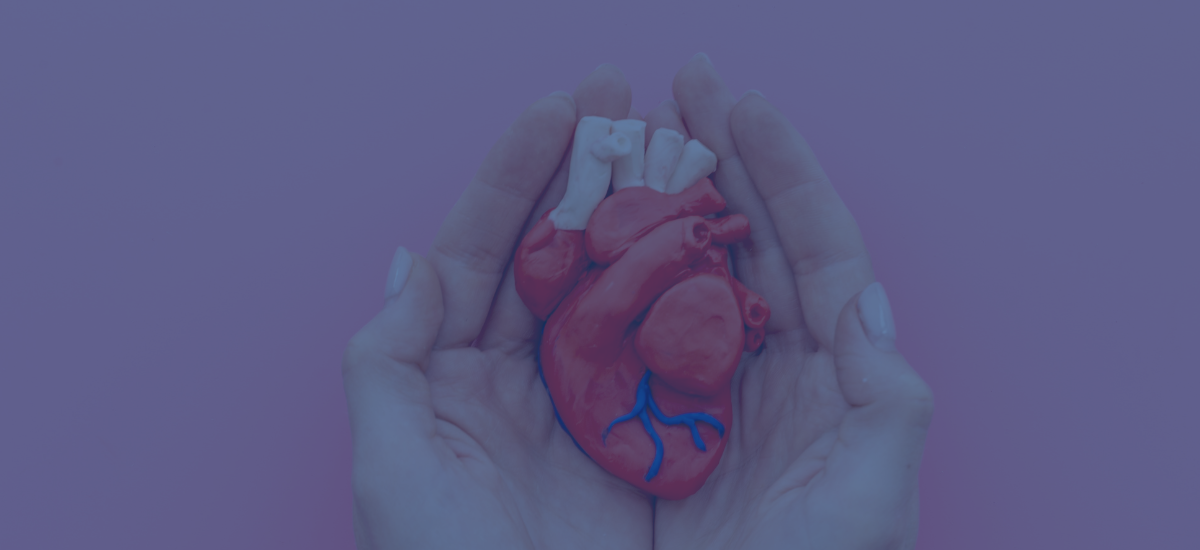The heart is one of the most vital organs in the body, and its proper functioning is crucial for overall health and well-being. The heart valves play a crucial role in regulating blood flow within the heart and throughout the body. However, not everyone is familiar with the anatomy and function of heart valves.
This comprehensive heart valve guide provides a detailed overview of heart valves, types of heart valves, functions, and potential health problems. Whether you are someone with an existing heart condition or simply curious about the heart’s inner workings, this guide will provide you with valuable insights and knowledge about the critical role that heart valves play in maintaining good health.
Schedule an appointment to learn more about Heart Valve
A] Anatomy and Function of Heart Valves
Our hearts have a total of four valves. Each heart valve is located in a specific position within your heart. They have different structures and roles.
Let’s take a look at the structures and jobs of different types of heart valves.
1. Mitral Valve
The mitral valve is a heart valve composed of two leaflets, and it plays a crucial role in regulating blood flow within the cardiovascular system. This valve facilitates the smooth flow of oxygen-depleted blood from the lungs to the left atrium, bypassing the two leaflets within the valve. Additionally, the mitral valve serves to prevent any backflow of blood from the left ventricle to the left atrium, maintaining proper circulation and ensuring that blood flows efficiently throughout the body.
2. Aortic Valve
This valve, like others in the heart, is composed of three leaflets and plays a crucial role in maintaining proper blood flow within the cardiovascular system. When the leaflets open, they facilitate the smooth flow of blood from the left ventricle to the aorta, the largest blood vessel in the human body. The aorta’s primary function is to transport oxygen-rich blood from the heart to all organs and tissues throughout the body, delivering the vital nutrients necessary for optimal health and well-being. Preventing the blood from flowing backward, from the aorta to the left ventricle, is yet another function of this heart valve.
3. Tricuspid Valve
The heart valve with three leaflets is a crucial component of the cardiovascular system. These leaflets serve to facilitate blood flow from the right atrium to the right ventricle, while also preventing any backflow of blood in the opposite direction. This ensures that the blood circulates efficiently throughout the body, providing vital nutrients and oxygen to all organs and tissues. By preventing the backflow of blood, this valve helps maintain proper pressure within the heart and prevents any potential complications.
4. Pulmonary Valve
The pulmonary valve, much like the tricuspid heart valve, consists of three leaflets. However, the purpose of this heart valve within the cardiovascular system differs. The pulmonary valve serves to facilitate the smooth flow of blood from the right ventricle to the pulmonary artery. From there, the blood is transported to the lungs, where it can absorb the necessary oxygen. In addition to its primary function, the pulmonary valve also plays a crucial role in preventing any backflow of blood from the pulmonary artery to the right ventricle, ensuring that the blood circulates efficiently throughout the body.
B] Common Heart Valve Problems
Now that you have learned about the heart valves and their anatomy, it’s time to discuss common heart valve problems. Listed below are some of the most common heart valves disorders:
1. Mitral Stenosis
Mitral stenosis is a condition that occurs when the normal outflow of blood from the left atrium to the left ventricle is either completely or significantly reduced. As a result, the left atrium must work harder to pump blood, which can lead to congestion in the lung arteries.
This combination of obstructed blood flow to the lungs and a slowed heart rate can result in right ventricular failure, as the right ventricle is responsible for pumping blood to the left side of the heart.
2. Mitral Regurgitation
Mitral regurgitation is a condition that occurs when the mitral valve fails to close properly, allowing blood to flow backward from the left ventricle into the left atrium. This condition can lead to the development of congestion in the pulmonary blood vessels due to the additional strain placed on the left atrium.
3. Mitral Valve Prolapse
Mitral valve prolapse is one of the most common anomalies in heart valve function, and it can lead to complications such as mitral regurgitation. This condition occurs when the mitral valve fails to open and seal properly, which can result in the backflow of blood into the left atrium.
If you are resident of Mumbai and are experiencing any of these mitral valve conditions, we encourage you to consult with an expert Mitral valve repair surgeon in Mumbai.
4. Aortic Stenosis
Aortic stenosis is a condition where the flow of blood from the left ventricle to the aorta is significantly obstructed, putting significant strain on the left ventricle to supply the body with blood. Hypertrophy, or thickening of the left ventricle wall, is a common complication of this disease.
5. Aortic Regurgitation
Aortic regurgitation occurs when the aortic valve fails to close properly, causing blood to flow back into the left ventricle. This backflow of blood creates high pressure in the left ventricle, leading to congestion in the pulmonary blood vessels.
If you live in Mumbai and are experiencing any of these aortic valve problems, consider paying a visit to an experienced aortic valve surgeon in mumbai.
C] Diagnosis and Treatment of Heart Valve Problems
When you visit an expert for any of the above problems, during the initial inspection, the doctor might recommend a series of diagnostic tests to identify the exact problems to figure out the right treatment procedure for your diagnosis.
1. Heart Valve Disorder Diagnosis
If the doctor identifies possible problems or symptoms related to heart complications, they will refer you to a cardiologist. The cardiologist might then put you through the following tests to find out the exact problem:
- Chest X-ray
- EKG
- Echocardiogram
- Stress test
- Cardiac catheterization
- Cardiac MRI
- Electrocardiogram
2. Heart Valve Disorder Treatments
The treatment for heart valve disorders can greatly vary based on the symptoms and the actual disorder. Medical experts often suggest that you start with a few lifestyle change such as, adopting a healthy diet adding exercises to your schedule, and more lifestyle changes that you can explore in our guide: 9 Lifestyle Changes You Need To Make For A Healthy Heart.
Post that, doctors will try to treat your disorder with the help of medications:
- Beta-blockers and calcium channel blockers help you control your blood flow and heart rate.
- Vasodilators can dilate your blood vessels.
- Diuretics can help you decrease fluid retention.
If the symptoms are severe enough, you might even need to go through surgery. The surgeries are usually performed to restore the heart valve function. The surgeons might try repairing the heart valves using the following:
- The tissue from your own body
- Heart valves donated by a donor
- An animal valve
- A mechanical or artificial valve
The surgeons might also perform valvuloplasty to treat different stenosis. During this surgery, the experts will insert a balloon into your heart, where it can be inflated. Doctors use this inflation to increase the valve size openings. After that, they would remove the balloon.
If you are looking for the costs of valve repair surgery, visit our blog: Heart Valve Repair Surgery Cost in Mumbai.
D] Lifestyle Modifications for Heart Valve Health
As we have already mentioned, if you want to protect the health of your heart valve and avoid future complications, you need to live a healthy lifestyle.
Listed below are few measures you can take to protect heart valve health:
- Curb smoking.
- Exercise on a daily basis.
- Maintain a cholesterol levels and healthy blood pressure
- Take antibiotics before different medical procedures, like a dental procedure.
- Add vegetables and fruits to your diet. Plus, avoid foods that have a high amount of trans fats and saturated fats in them. You can check our guide to heart-healthy foodsto create a healthy diet plan.
- Go through regular medical checkups to figure out possible problems early on.
- If you have a heart-related issue, talk to your doctor immediately.
Schedule an appointment to learn more about Heart Valve
Conclusion
Understanding heart valves and their functions is crucial for maintaining heart health. The four valves, the mitral, aortic, tricuspid and pulmonary valves, are essential in ensuring that blood flows through the heart and the body efficiently. Any dysfunction or damage to these valves can lead to serious heart conditions that require medical attention.
By recognizing the signs and symptoms of valve problems and seeking prompt medical intervention, individuals can reduce their risk of developing life-threatening heart conditions. Overall, taking care of the heart valves is essential to maintaining a healthy heart and a healthy life.
Suppose you are looking for aortic, mitral or tricuspid valve replacement in Mumbai. In that case, you’ll need to rely on a reliable and expert cardiovascular surgeon in Mumbai with a proper cost structure for valve replacement surgery. Which is why we encourage you to contact us without any hesitation.





[…] Our exhaustive guide shares detailed heart valves information and everything you need to know about their proper functioning. […]
[…] Infective Endocarditis, also known as a valve infection, happens primarily because of a bacterial infection. The bacteria can enter the blood through the mouth, skin, intestines, urinary tract, and respiratory systems. Once the bacteria enters the blood, it can attach to and attack heart valves. […]
[…] you will be better equipped to make informed decisions. It is also crucial for the patient to learn about heart valves and its importance to maintain a healthy […]